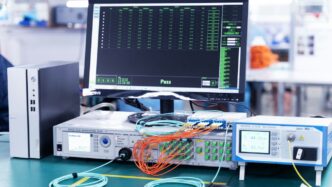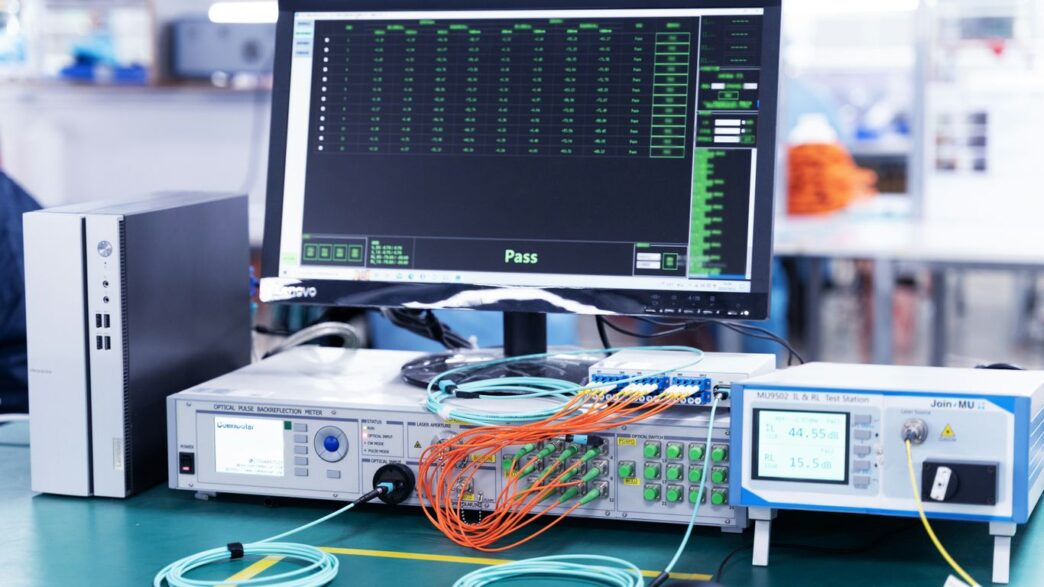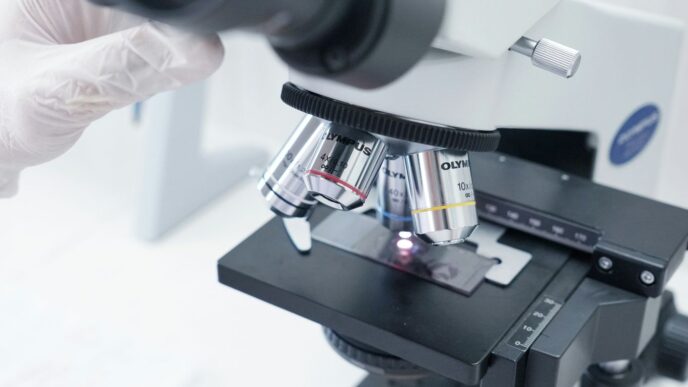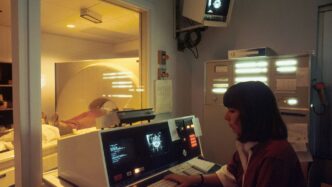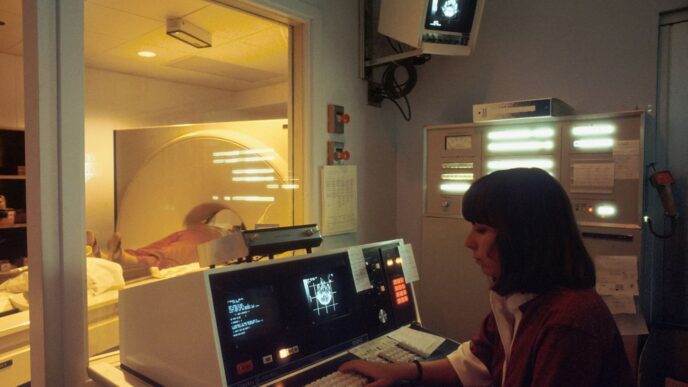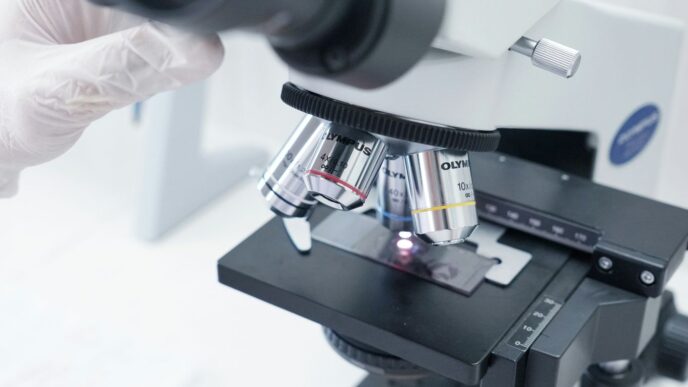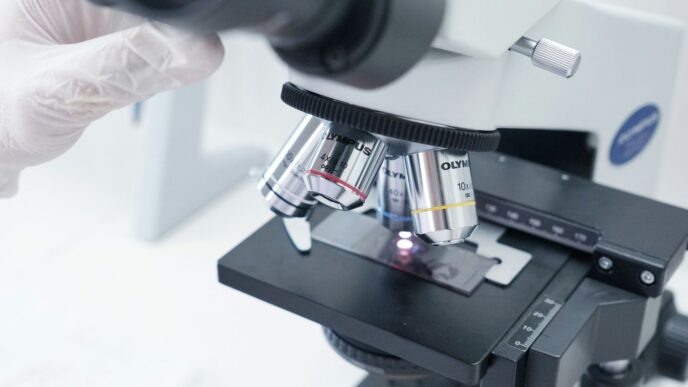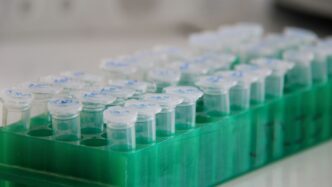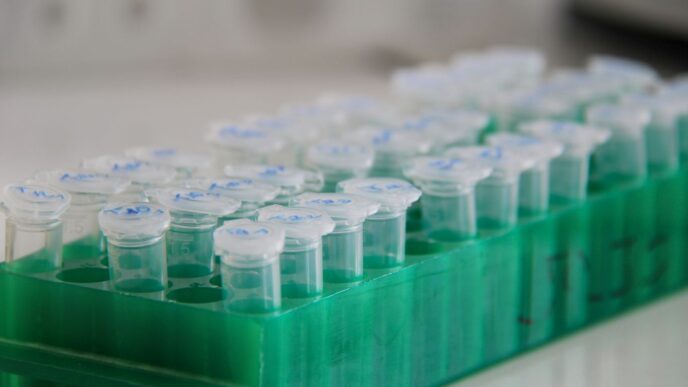Hospitals are busy places, right? Things are always moving, and keeping track of everything, from the smallest piece of equipment to important patient records, can feel like a huge job. Sometimes, things get misplaced, or maintenance gets delayed, which can really mess with patient care. But what if there was a way to make all of that much simpler and more reliable? That’s where rfid hospital asset tracking comes into play. It’s a technology that’s changing how hospitals operate, making things safer and more efficient for everyone involved.
Key Takeaways
- RFID hospital asset tracking helps prevent the loss of vital medical equipment by providing real-time visibility of assets.
- The technology improves patient safety by reducing misidentification and preventing medication or surgical errors through accurate tracking.
- Hospitals can achieve better inventory control and optimize resource allocation by automating reordering and replenishment processes.
- RFID systems streamline hospital operations by boosting staff efficiency, speeding up emergency responses, and simplifying access to patient records.
- Implementing rfid hospital asset tracking leads to significant cost savings by minimizing equipment procurement, reducing waste, and improving overall operational efficiency.
Revolutionizing Medical Equipment Management
Managing all the medical equipment in a hospital can feel like trying to herd cats, honestly. There’s so much of it, and it moves around constantly. Old ways of tracking things, like just writing stuff down or relying on barcodes, often lead to lost items, unexpected costs, and a lot of wasted time. RFID technology is changing that game by giving us a clear picture of where everything is, all the time. This means less money spent replacing lost gear and more confidence that our equipment is ready when we need it.
Preventing Loss of Vital Equipment
It’s a real problem when expensive medical devices go missing. Sometimes they end up in laundry bins or trash cans by accident during quick clean-ups between patients. RFID tags can help. If a tagged piece of equipment ends up somewhere it shouldn’t be, like a waste bin, the system can send an alert. This lets staff find it quickly before it’s truly lost. This saves a lot of hassle and money that would otherwise be spent searching or buying replacements.
Ensuring Timely Maintenance and Upkeep
Keeping medical equipment in good working order is super important for patient safety and avoiding breakdowns. With RFID, we can attach tags to equipment that track when they were last serviced or when their next maintenance is due. The system can then remind staff when it’s time for a check-up or sterilization. This proactive approach helps prevent equipment failure and makes sure everything is safe and ready for use.
Streamlining Supply Chain Operations
Tracking supplies and implants used to be a manual headache. Now, RFID tags on these items mean we can keep a much closer eye on inventory. The system knows what we have, how much we’re using, and when we’re running low. This helps avoid having too much stock sitting around, which can expire and go to waste, or running out of something critical when a patient needs it. It makes ordering new supplies much smarter and more efficient.
Enhancing Patient Safety and Care
When it comes to looking after people in a hospital, getting things right is super important. You don’t want mistakes happening, especially when it comes to who is who or what treatment someone is getting. That’s where RFID really steps in to help.
Reducing Patient Misidentification
It sounds basic, but making sure you know exactly who you’re dealing with is the first step in good care. Sometimes, with busy wards and lots of people, mix-ups can happen. RFID wristbands can hold all the important patient details, making it simple for nurses and doctors to check they have the right person before giving medicine or starting a procedure. This cuts down on those scary moments where the wrong treatment might be given. It’s like having a digital ID for every patient, always on hand and easy to read.
Preventing Medication and Surgical Errors
Beyond just knowing who the patient is, RFID helps make sure they get the right care. Think about giving out medications. A quick scan of the RFID wristband against the patient’s record can confirm it’s the correct drug, dosage, and time. This is a big deal for preventing mistakes. The same goes for the operating room. Tracking surgical tools with RFID means nothing gets left behind accidentally. It also helps confirm the right patient is having the right surgery on the right body part. It’s all about adding layers of checks to keep everyone safe.
Improving Infant Security and Patient Monitoring
Newborns in maternity wards are especially vulnerable. RFID technology can be used to keep a close eye on them, making sure they stay in safe zones and aren’t accidentally taken by the wrong person. It’s a way to add an extra layer of security for the littlest patients. Beyond that, RFID can help monitor patients who might wander or need to stay within certain areas. It gives staff peace of mind and helps manage patient flow more effectively, especially for those who might be confused or at risk.
Optimizing Inventory and Resource Allocation

Hospitals have a lot of stuff, from big machines to tiny bandages. Keeping track of it all can be a real headache, and frankly, it’s easy for things to get lost or misplaced. This is where RFID technology really shines, making inventory management way less of a chore.
Achieving Accurate Inventory Control
Forget counting things by hand or relying on old barcode scanners that miss half the items. RFID tags on everything, from wheelchairs to surgical gloves, mean you get a real-time picture of what you have and where it is. This constant visibility stops you from ordering things you already have plenty of, and more importantly, it makes sure you don’t run out of critical supplies when a patient needs them. It’s like having a super-smart assistant who knows every single item in the hospital.
Space Optimization and Workflow Improvement
When you know exactly what inventory you have, you can stop hoarding. Storing excess supplies takes up valuable space that could be used for patient care or other important functions. RFID helps you figure out what you actually need, so you can reduce clutter and make better use of your hospital’s footprint. Plus, when staff can find what they need quickly, without digging through piles of stuff, their workday gets a lot smoother. Think about how much time is wasted searching for a specific piece of equipment – RFID cuts that down significantly.
Automating Reordering and Replenishment
Running out of essential items is a big problem. RFID systems can be set up to monitor stock levels automatically. When a particular item drops below a pre-set minimum, the system can trigger an alert or even automatically generate a purchase order. This means you’re always stocked up on what you need, without anyone having to manually check bins or make phone calls. It’s a simple way to keep the hospital running without interruption and avoid those last-minute scrambles to find a replacement.
Streamlining Hospital Operations with RFID
In the hustle and bustle of a hospital, things can get pretty chaotic. Keeping track of everything, from who’s who to where that vital piece of equipment is, takes a lot of effort. That’s where RFID, or Radio-Frequency Identification, really steps in to make life easier for everyone.
Improving Staff Efficiency and Productivity
Think about how much time your staff spends looking for things. It’s a lot, right? RFID tags on equipment mean that instead of a scavenger hunt, a quick scan tells you exactly where something is. This isn’t just about finding a misplaced IV pump; it’s about freeing up nurses and technicians to do what they do best – care for patients. When you can quickly locate and grab the tools you need, you’re not just saving minutes, you’re saving valuable time that can be redirected to patient interaction and critical tasks. Plus, with RFID, you can even do things like check out multiple pieces of equipment at once, which is a huge time-saver, especially during busy periods or emergencies.
Accelerating Emergency Response Times
When seconds count, fumbling around for the right equipment can have serious consequences. RFID systems provide real-time location data for critical assets like defibrillators, ventilators, and emergency carts. This immediate visibility means that in a crisis, responders can pinpoint the exact location of necessary equipment without delay. This speed can make a real difference in patient outcomes. Imagine a cardiac arrest situation; knowing instantly where the nearest crash cart is located, rather than searching hallways, is a game-changer. It streamlines the entire emergency response process, from initial alert to intervention.
Facilitating Seamless Electronic Health Record Access
Connecting the physical world of medical assets with the digital world of patient records is another big win for RFID. While RFID itself doesn’t store patient records, it acts as a bridge. For instance, RFID-enabled patient wristbands can quickly link a patient to their electronic health record (EHR) when scanned. This means a nurse can scan a wristband before administering medication, instantly pulling up the correct patient information, allergies, and prescribed treatments directly from the EHR. This reduces the risk of errors and makes sure everyone is working with the most up-to-date information, improving the accuracy and safety of care provided.
The Technology Behind RFID Hospital Asset Tracking
So, how does this whole RFID thing actually work in a hospital? It’s not magic, though it might seem like it when you see how quickly things can be found. At its core, RFID, or Radio Frequency Identification, uses little tags and special readers to keep tabs on stuff. Think of it like a super-powered version of those security tags you see on clothes, but way more advanced and used for everything from IV pumps to expensive surgical tools.
Understanding RFID Tag and Reader Functionality
These RFID tags are pretty neat. They’re small, often just a sticker or embedded in a label, and they contain a tiny microchip and an antenna. The chip stores a unique identification number for the item it’s attached to. When an RFID reader comes within range – and this range can vary a lot depending on the type of tag and reader – it sends out a radio signal. This signal powers up the tag (if it’s a passive tag, which most hospital ones are) or wakes it up (if it’s active). The tag then sends its stored information back to the reader. This exchange happens wirelessly, without needing a direct line of sight, which is a big deal in a busy hospital environment. Different types of tags exist, like passive ones that rely on the reader’s power, and active ones with their own battery that can transmit further and more frequently. For hospital assets, passive tags are often used for lower-cost items or those that don’t need constant, minute-by-minute tracking, while active tags might be used for high-value equipment that needs to be located instantly.
Wireless Data Transmission and Real-Time Tracking
Once the reader picks up the information from the RFID tag, that data needs to go somewhere useful. This is where the wireless transmission comes in. The readers are connected to the hospital’s network, either wired or wirelessly. They send the tag’s ID, along with information about when and where it was read, to a central software system. This system is the brain of the operation. It keeps a database of all tagged assets and their last known locations. Because readers can be placed strategically throughout the hospital – in hallways, at doorways, in specific rooms – the system can update an asset’s location in near real-time. So, if a portable X-ray machine is moved from the radiology department to a patient’s room, the reader at the room’s entrance will pick up its tag, and the system will show it’s now in that room. This constant stream of data allows for immediate visibility into where everything is.
Integration with Existing Hospital Systems
Now, just knowing where an IV pole is isn’t the whole story. The real power comes when this RFID data talks to other systems the hospital already uses. For example, the RFID tracking software can be linked to the hospital’s Electronic Health Record (EHR) system. Imagine a nurse needing a specific piece of equipment for a procedure; instead of searching, they could check the system, see its location, and even reserve it. It can also connect with inventory management software. When a tagged supply item is used, the system can automatically flag it for reordering, preventing stockouts. This integration means less manual data entry for staff, fewer errors, and a smoother workflow overall. It turns a simple tracking system into a powerful operational tool that supports patient care and administrative tasks.
Cost Savings and Financial Benefits
Let’s talk about the money side of things. Implementing RFID for tracking hospital assets isn’t just about fancy tech; it actually makes a real difference to the bottom line. Think about it: how much money gets tied up in equipment that’s misplaced, lost, or just not being used efficiently? RFID helps cut down on a lot of that waste.
Minimizing Procurement Costs for Equipment
One of the biggest drains on a hospital’s budget can be constantly replacing equipment that’s gone missing. Whether it’s accidentally thrown out, misplaced in a busy ward, or even stolen, these losses add up fast. With RFID, you get real-time visibility of where your assets are. This means staff can quickly locate items, reducing the chances of them being lost in the first place. This proactive approach significantly cuts down on the need to purchase replacements for items that were simply misplaced. It also helps in identifying equipment that might be underutilized, allowing for better sharing and reducing the need for duplicate purchases.
Reducing Waste from Expired Supplies
It’s not just expensive equipment that costs money when it’s not managed well. Think about all the medical supplies, from bandages to specialized medications. If inventory isn’t tracked accurately, items can sit on shelves for too long and expire before they’re ever used. This is a direct financial loss. RFID systems can provide accurate, up-to-the-minute inventory counts. This allows for better stock rotation (first-in, first-out) and helps in identifying slow-moving items that might be nearing their expiration date. This means less product goes to waste, and you’re not throwing away money.
Improving Overall Operational Efficiency
When staff spend less time searching for equipment or manually counting inventory, they have more time to focus on what really matters: patient care. This boost in efficiency translates directly into cost savings. Think about the hours saved across an entire hospital staff over a week, a month, or a year. That’s a lot of productive time that was previously lost. Furthermore, by automating tasks like inventory checks and reordering, you reduce the potential for human error, which can lead to costly mistakes. The ability to quickly locate equipment also speeds up patient treatment and diagnostic processes, potentially reducing patient wait times and improving throughput, which can also have financial implications.
Implementing RFID for Enhanced Security
When we talk about security in a hospital, it’s not just about keeping people out of places they shouldn’t be. It’s also about making sure the right things are in the right hands, and that sensitive items are protected. RFID technology plays a big role here, acting like a digital guardian for critical hospital assets and information.
Restricting Access to Sensitive Areas
Think about areas in a hospital that hold valuable medications, sensitive patient records, or expensive equipment. You don’t want just anyone wandering in. RFID can help manage who gets access to these zones. By attaching RFID tags to staff badges or specific equipment, you can create electronic checkpoints. When an authorized person or item approaches a restricted door, the RFID reader recognizes the tag and grants entry. If an unauthorized badge or item is detected, an alert can be sent. This helps keep unauthorized individuals away from areas where they could cause harm or steal.
Authenticating Medications and Pharmaceuticals
Medication errors are a serious concern in healthcare. RFID offers a way to add an extra layer of verification. Imagine each medication package having a small RFID tag. Before a nurse administers a drug, they can scan the tag. This scan instantly checks the medication against the patient’s record in the electronic health system. It verifies that it’s the correct drug, the right dosage, and that it’s not expired or recalled. This process significantly reduces the chances of giving a patient the wrong medicine, which could have severe consequences. It’s like having a digital double-check that’s incredibly fast and accurate.
Tracking Surgical Instruments for Safety
After a surgery, the last thing anyone wants is to realize a surgical instrument was left inside a patient. It’s a terrifying thought and a preventable error. RFID tags can be attached to individual surgical tools. During a procedure, staff can quickly scan a tray of instruments to confirm everything is accounted for before closing up. This real-time tracking means that if an instrument is missing, it’s identified immediately, not hours or days later. This not only protects patients but also helps hospitals manage their expensive instrument inventory more effectively, making sure they know exactly what they have and where it is.
The Future is Now: Embracing RFID for Better Healthcare
So, we’ve talked a lot about how RFID technology is changing things in hospitals. It’s not just about finding a misplaced stretcher anymore, though that’s a big help. This tech is really about making sure everything runs smoothly, from keeping track of expensive equipment to making sure patients get the right care at the right time. It cuts down on wasted money, helps staff do their jobs better, and most importantly, it makes things safer for patients. Implementing something like this takes effort, sure, but the payoff in terms of efficiency and better patient outcomes is pretty huge. It feels like we’re moving towards a future where hospitals are just more organized and reliable, and RFID is a big part of that.
Frequently Asked Questions
What exactly is RFID, and how does it help hospitals?
RFID stands for Radio-Frequency Identification. Think of it like a super-smart tag that uses radio waves to send information. In hospitals, these tags can be put on important gear, like wheelchairs or heart monitors. When a special scanner passes by, it can instantly tell you where that item is, if it’s being used, or if it needs maintenance. This helps hospitals keep track of everything, making sure the right equipment is always available and in good working order.
How does RFID make patient care safer?
RFID can help in a few big ways. For starters, it can be used on wristbands to make sure doctors and nurses know exactly who each patient is, reducing mix-ups. It can also help track medications to ensure patients get the right ones. Plus, it can keep an eye on things like surgical tools to make sure none are accidentally left behind after a procedure. It’s all about reducing mistakes and keeping patients out of harm’s way.
Can RFID help prevent equipment from getting lost or stolen?
Absolutely! Hospitals have tons of equipment, and sometimes things get misplaced, especially during busy times or when cleaning up. RFID tags act like tiny trackers. If a valuable piece of equipment accidentally ends up in the laundry bin or somewhere it shouldn’t be, the system can send an alert. This helps staff find items quickly before they’re truly lost, saving the hospital money and ensuring equipment is ready when needed.
Does RFID help hospitals save money?
Yes, it really does. When hospitals know exactly where all their equipment is, they don’t have to buy new items as often because things aren’t getting lost. It also helps manage supplies better, so they don’t run out of important things or have too much expire. By making things run more smoothly and reducing waste, RFID helps hospitals spend less money overall.
Is it hard to set up an RFID system in a hospital?
Setting up an RFID system can be a bit challenging at first. It involves buying the tags and scanners, and making sure they work well with the hospital’s existing computer systems. Plus, all the staff need to be trained on how to use it. Hospitals need to plan carefully to make sure the transition goes smoothly and everyone knows what to do.
What kind of information can RFID tags hold?
RFID tags are like little digital memory cards. They can store basic information like a unique ID number for the item, its location, or when it was last checked. For patients, RFID wristbands can securely store important details like allergies or medical history, which can be quickly accessed by authorized staff. The information is usually encrypted to keep it private and safe.

